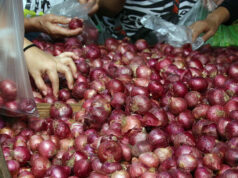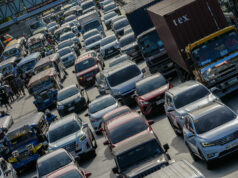There is more to Kobe than just beef
By Cathy Rose A. Garcia, Associate Editor
MOST PEOPLE head to Kobe, Japan just to sample the famous Wagyu beef, but there’s so much more to the capital city of Hyogo Prefecture.
Located about 30 kilometers west of Osaka, Kobe is a perfect day trip. It takes about an hour by train from downtown Osaka to Kobe-Sannomiya station, the city’s main railway terminal.
Kobe has a lot to offer, such as gardens, saké breweries, museums, and even a Chinatown.
HAKUTSURU SAKÉ BREWING
First stop on our itinerary was a visit to a saké brewery.
One of Kobe’s best-known saké breweries is Hakutsuru Saké Brewing Co., Ltd. The company restored its old saké brewhouse and turned it into the Saké Brewery Museum, which is open to the public for free.
The two-level museum features dioramas showing the process of making saké. To make up the lack of English language signs, visitors can watch videos on the history of saké and how it is made.
At the end of the tour, visitors can sample saké as well as purchase different kinds of saké, saké cups, cosmetics, face masks, and even saké ice cream.
KOBE NUNOBIKI HERB GARDENS
Our next stop was Kobe Nunobiki Herb Gardens, located on Mount Rokko. Considered one of Japan’s largest herb garden, it boasts of around 75,000 herbs and flowers. The garden areas are divided into themes, such as Rose Symphony Garden, Four Seasons Garden, and Kitchen Garden.
We had to take a cable car to go to the Welcome Garden, where you can have snacks and coffee at the café. The building is designed to look like a German castle, giving a vaguely European atmosphere.
We took a leisurely walk down the mountain, pausing to enjoy the fresh air and take countless photos of the pretty flowers and lush trees. The Herb Garden features over 100 varieties of herbs, while the Kitchen Garden mixes vegetables and herbs.
The Kaze no Oka Flower Garden is particularly picturesque, as colorful flowers blanket the hill. There are numerous benches and hammocks where you can take a break and take in the gorgeous view of Kobe city.
At the time of our visit, the gardens were filed with roses, lavender, marigold, and chamomile.
KOBE BEEF
Having worked up an appetite, we headed to downtown Kobe in search of the city’s famous Kobe beef. Across from Sannomiya station, there are rows of restaurants serving Kobe beef.
Steakland is a popular choice among tourists because it offers set meals with Kobe beef at a “reasonable” price. Lunch is a particularly busy time, since the lunch set prices are lower than those during dinner.
Kobe beef is a type of Wagyu beef from Tajima black cattle that are born, raised, and slaughtered in Hyogo prefecture. But not all Tajima cattle have meat that can be considered as Kobe beef, as only a few thousand cows meet the standards.
At Steakland, the Kobe beef was served teppanyaki-style. A chef cooked the cubes of beef on a sizzling iron griddle in front of us. It was cooked medium-rare, making it extremely tender and juicy. The set meal also included drinks, rice, grilled vegetables, and miso soup.
EARTHQUAKE!
After lunch, we headed to the Great Hanshin-Awaji Earthquake Memorial Museum.
Going around Kobe with its gleaming buildings and excellent roads, it is difficult to imagine that the city was in ruins after being hit by a massive earthquake on Jan. 17, 1995. The Great Hanshin Earthquake, which had a magnitude of 6.9, left over 6,000 people dead and over 43,000 injured. Nearly 250,000 homes were completely or partially destroyed, along with roads, public transportation, and other structures.
Through the museum, the Disaster Reduction and Human Renovation Institution aims to ensure that the lessons from the massive earthquake are not forgotten and it provides crucial information on how to prepare for future disasters.
We watched a short 3-D documentary on the areas affected by the earthquake, the aftermath and the reconstruction efforts. Homes made of light materials, old buildings, even highways, collapsed easily.
Seeing how easily the old buildings and homes made of light materials collapsed brought back memories of the 1990 Luzon earthquake, where a magnitude 7.7 quake caused widespread damage in the region and over 1,000 people were killed. It makes you wonder how major cities in the Philippines will be able to withstand an earthquake of a similar magnitude.
Like Japan, the Philippines is geographically prone to natural disasters and can learn much from the country’s experience in handling relief efforts, reconstruction and disaster prevention.
And if Kobe, brought to its knees after the 1995 quake, can rise and become the bustling city it is now 24 years later, then there’s hope.



